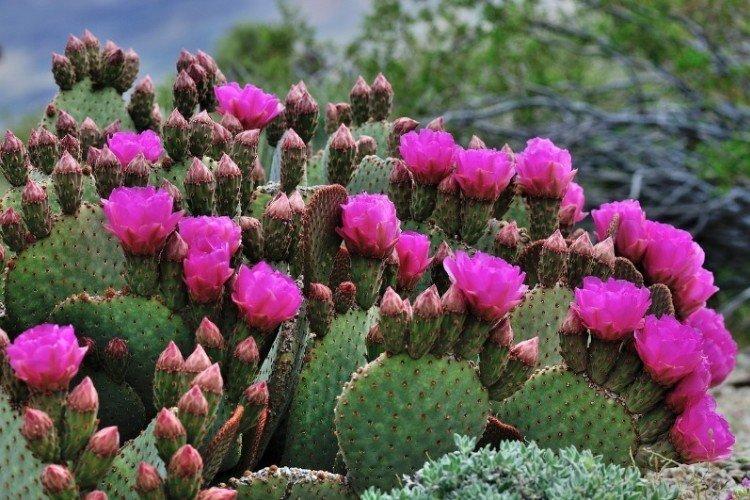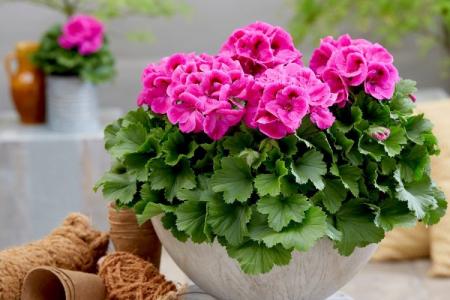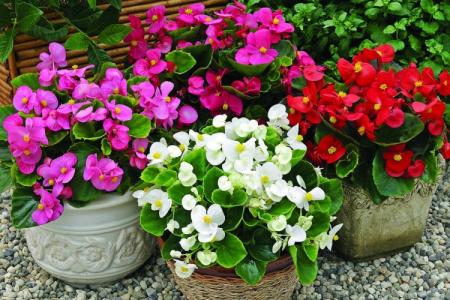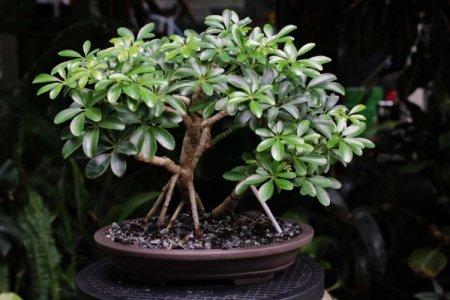
If you love beautiful decorative cacti, prickly pear will definitely delight you! In addition, it is unpretentious in care, blooms and even has useful properties. For example, its fruits are widely used in cooking. Let's tell you more!
general information
The whole variety of prickly pear species is united by a characteristic structure. It consists of separate rounded segments, and they can be of different sizes and are connected to each other in completely different ways. The surface is covered with hard spines.
In nature, prickly pear grows in savannas and subtropics. She prefers high ground, bright sunlight and sandy soils. There are not only standing, but also creeping species. The root system is not too deep, but spreading.
During the summer, prickly pear blooms with neat bells of all shades of red and pink, but in home floriculture there are already varieties with other colors. After flowering, juicy sweet berries appear, and in some species they are quite edible.

Types of prickly pear
The genus of prickly pears is very diverse, but most of the species are wild giants that do not grow in our latitudes. However, some varieties were still cultivated for indoor cultivation!
Brittle prickly pear
The compact decorative cactus consists of tiny segments of 2-3 cm each. The spines are very short, but the flowers are quite large, with a pleasant pastel yellow shade.

Fine-haired prickly pear
Instead of hard large spines, it is covered with a rather light fluff. Yellow flowers reach 5 cm in diameter. The shrub itself is quite large - up to 1 m.

Pink-flowered prickly pear
The name speaks for itself. The teardrop-shaped segments are covered with long white spines arranged in small groups. This is a frost-hardy species that grows in nature in the mountains.

Opuntia Gosselina
This species is easily recognizable by the pinkish-red color that young needles give the cactus. Over time, they fade and fade, but new ones grow on new segments.

Berger's prickly pear
She is loved for the bright herbaceous color of the shoots. The segments of which they are composed are rather large - up to 25 cm in length. All of them are covered with long single spines.

Fig prickly pear
It has one large and fleshy stem, which grows from above with a crown of small segments. The spines are quite rare, and the flowers are large, bright red.

Long-awned prickly pear
The body of this prickly pear consists of very small segments up to 4 cm each. Moreover, they are densely covered with relatively long whitish spines.

Curasavskaya prickly pear
Creeping view with elongated segments of 8 cm each. It is densely covered with yellow thorns. It is a very fragile cactus that breaks down easily and thus multiplies quickly.

Opuntia care
Like most cacti, prickly pears are completely unpretentious if they have enough heat and light, but if there is insufficient light, they will easily die!
Temperature
For prickly pears, the average room temperature is suitable throughout the year. But still, for the winter, we advise you to provide her with a dormant period at +10 degrees.

Lighting
Contrary to stereotypes, cacti are not very fond of the scorching rays of the sun, and prickly pear is no exception. She needs bright and regular lighting, but you should not leave her on the south windows in the height of summer without light shading by noon.

Watering
The fleshy stem accumulates enough moisture so that the cactus does not suffer from drought. So you need to water it carefully and infrequently. In the cold season, several times a month are enough. Opuntia is indifferent to air humidity. She does not need spraying, but it will not harm, as well as a warm shower.

The soil
Ready-made mixtures for cacti are suitable, as well as clayey leafy soil with an increased content of sand.It is important that even dense soil remains loose enough to avoid stagnant water.

Fertilizers and feeding
To make the prickly pear grow faster and be more fleshy, use liquid fertilizer for the cactus once a month. But choose the lowest dosage, because it is harmful to overfeed them.

Transfer
Young cacti are transplanted as they grow every few years. It is important to choose the right flowerpot so that it is quite a bit larger than the root system, and ideally, stable and wide. For adult prickly pears, it is enough to renew the topsoil.

Planting and breeding prickly pears
Propagating prickly pear by seeds is a thankless job. They are difficult to prepare, and then they take a long time to sprout. Therefore, the grafting method is used.
Closer to summer, choose a healthy, beautiful segment without buds, carefully cut it off, treat it with charcoal and dry it for several days in the fresh air. Plant the cactus in wet sand and leave it warm and light for about a month. After the formation of full-fledged roots, the prickly pear can be transplanted.

Pest and disease control
The only serious problem prickly pear suffers from is rot due to overflow and dampness. In this case, you need to cut off the affected segments, treat the plant with fungicides and dry the soil.

Opuntia - photo
For all its simplicity, prickly pear is surprisingly good and will perfectly complement any home green corner. Just look at these photos!


























